Picturing mental health
- Published
- comments
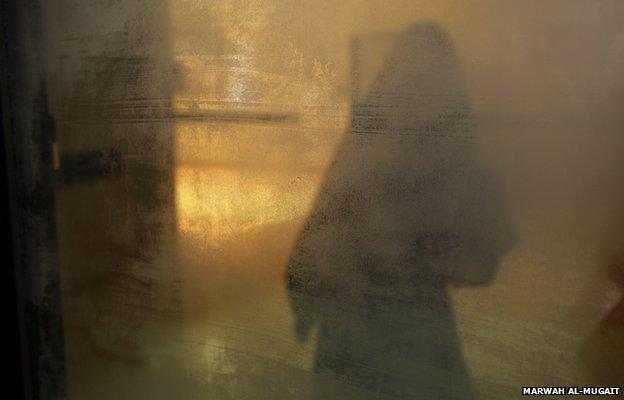
Between illusion and reality...is where I stand, by Marwah Al-Mugait
Photographic courses often surprise those who set out on the journey into further education and this year I have been following the work of Marwah Al-Mugait and Michael McGuinness, two students on the MA Photojournalism course at the University of Westminster.
Nearly a year on from the first time we met they have now completed their course and their final project is on show at Ambika P3 Gallery along with those of their peers. The show is entitled Here and There, and comprises a wide variety of work and styles, but all approach their subjects with inquisitive eyes and an understanding of the strengths and weaknesses of the photographic medium.
Last week I caught up with Marwah and Michael at our new offices in Broadcasting House to see their work and find out how the course has shaped their outlook.
Both students decided to tackle mental health issues for their final project, a subject notoriously difficult to photograph without resorting to cliche and intrusion. Yet both have steered clear of these pitfalls and come to see that as Marwah states, "It is not only the photograph but the story behind it that makes it beautiful." And I'd add, it is the story that gives it purpose and value.
So let's take a look at their work.
Marwah Al-Mugait
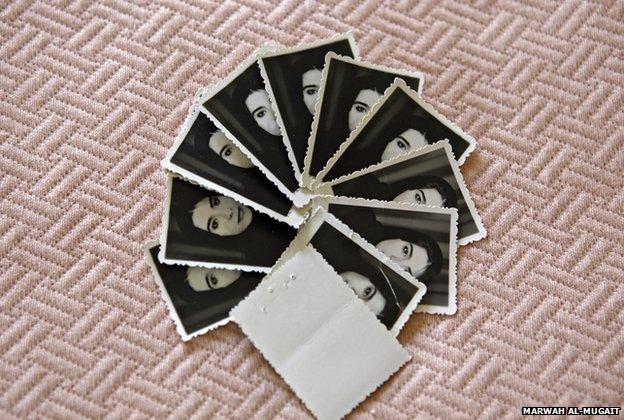
I can never tell, who am I?
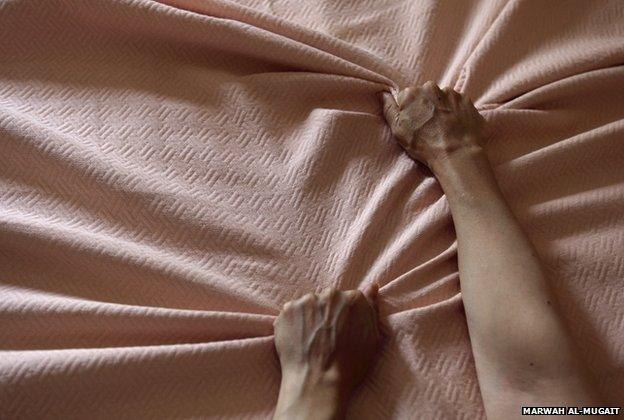
Silent pain overpowers all of the world's noise

A double life
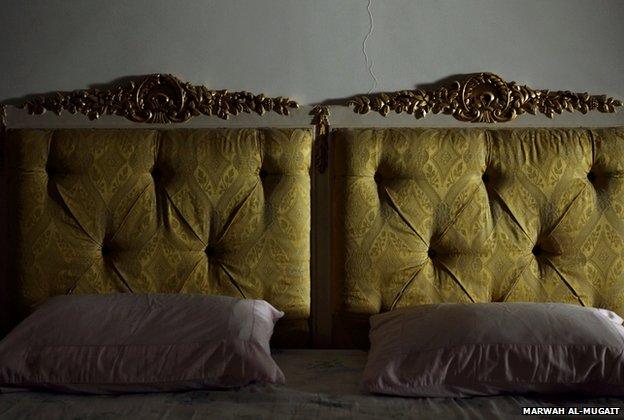
In my shell I escape and the rest of the world doesn't matter
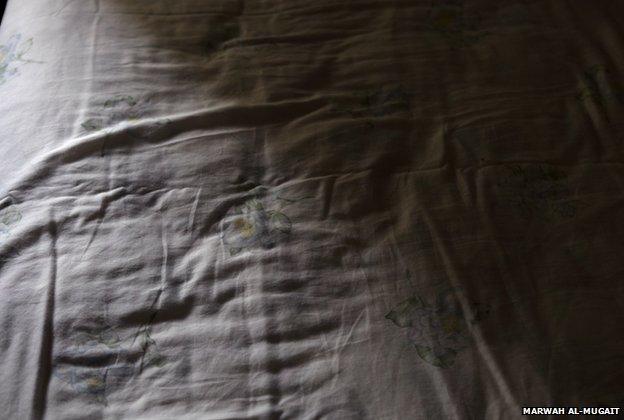
Unveiling my sorrows

It seems as if all the past is blurred in black and white
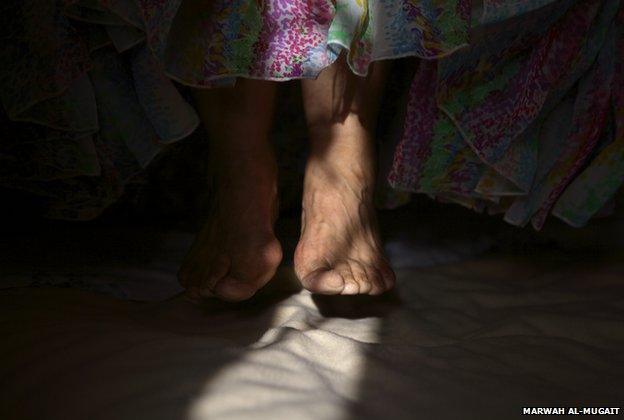
Levitation, where I feel no gravity...a moment that I wish would never end
Marwah undertook to examine mental health issues in her home town of Riyadh in Saudi Arabia. No mean task, indeed it is not a subject that attracts many photographers, if any.
Her project focuses on Mona, who Marwah says, "bravely opened all the locked doors into her private life and revealed 27 years of suffering from bipolar disorder."
Throughout the course Marwah's work has developed from purely aesthetic images to those that have power and speak to the viewer. Yet she has retained an eye for visual beauty and ensured her pictures are compelling and draw the reader to the story itself.
Course leader Max Houghton agrees, saying, "Marwah has remained true to her aesthetics, we haven't moulded her but allowed her to unfold herself, rather than saying this is Western photojournalism and this is what you do."
This can be seen in her latest work. "As in any other country there is a growth in bipolar disorder in Saudi Arabia and I tried to go towards less shocking, less direct images," Marwah recalls.
The project took time to come together and it was only after much searching and heading down a few dead ends that Marwah found Mona, as many of those she approached did not want to talk about their illness as it may jeopardise their position in society.
"Through this process I went to places I have never been nor expected go," Marwah says. "A psychiatry ward in a military hospital was shocking to witness even without photographing."
Marwah's work is an intimate piece and the title, Mood Diary, reflects that well. It is not as such a piece of documentary photography, yet through it we can learn much and perhaps it will encourage further research and understanding.
"My aim was to symbolise what is going on in the mind of patient during the depression and mania," Marwah tells me. "John Darwell's A Black Dog Came Calling, external, which describes an episode of depression, was one of my inspirations. Whilst visiting Mona I didn't photograph directly, it was about knowing her and gaining her trust." It was this that provides the series with a feeling of being a collaborative piece of work.
"You have to research deeply before you pick up your camera. I used to grab my camera and shoot, now I plan and research first, the last thing is taking the pictures," Marwah says. It is that research and understanding of subject that helps build confidence in having the right to actually enter someone else's life with your camera. Without that you are little more than an intruder.
"You do feel extremely responsible," Marwah says. "How to present the story is delicate and in this case Mona did not want to be photographed directly, yet this is her first step to declare her mental problem."
"I think photojournalism can be criticised for looking at the miserable side of life and depressing issues," Max adds. "But I don't think that is the right thing to criticise. I think that is to be praised and celebrated as photography can be a tool to discover and an extra sensory experience. It is more than visual and allows in other emotions, and in the right hands can tell stories differently." And Marwah's work fits neatly into this sphere.
Michael McGuinness
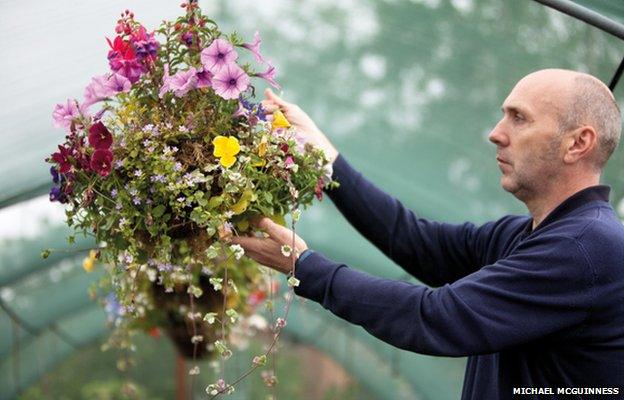
Turning to Michael's work on mental health we get a very different approach as he has been documenting the role of the Birmingham and Solihull Mental Health Foundation Trust (BSMHFT).
The project is entitled Monday comes very quickly - Photographing the Unseeable, and is presented in the form of a newspaper, external, something that seems to be very popular at present.
The very fact that Michael has pulled a piece of work together on this scale is to be applauded. It is a massive undertaking and one that Michael threw himself into with a passion, spending many weeks working with the Trust.
The first weeks passed without a frame being shot as Michael was shown around the unit, negotiated access and met both staff and users of the service.
Having spent so many weeks away from the course in London Michael found he had an interesting session with his lecturer. "I got into some trouble with Ben Edwards (one of the tutors), who asked what I was doing? Do I not need the course's experience he asked me? But logistically I couldn't do it as I had to spend six weeks not taking pictures and just being shown around. At the first tutorial, I had 36 images."
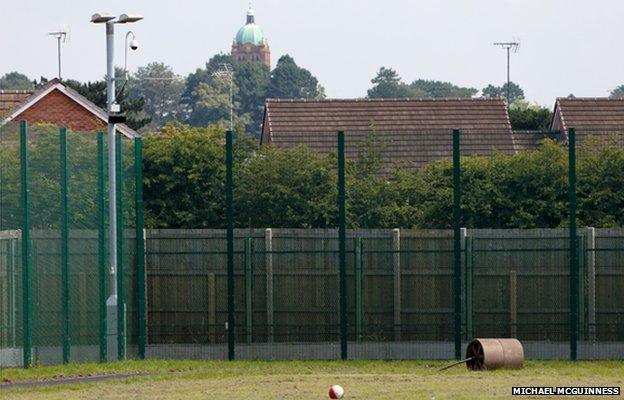
This was something Michael had to go through and the rewards were to come, with access to an establishment and environment that requires the utmost care to work in. Sue Turner, the Chief executive of BSMHFT notes how Michael has, "taken on the challenge to capture what life is like for staff and service users across our trust… Michael was given unprecedented access to many of our trust's sites to ensure he was able to illustrate the challenges and triumphs our staff and service users experience every day - and to help tackle the stigma surrounding mental health issues."
Having been granted access Michael immersed himself in the trust's work and the subject of mental health. "The title of the work Monday comes very quickly derives from and idea that we all face similar challenges in life," Michael says. "Monday remains a fixed entity; it is a day when we are supposed to be alert, engaged and ready to face the world. However, many people who suffer from mental health issues may not feel this way as they may feel excluded in terms of engaging with the regular rhythms, demands or expectations of daily life."
Michael's project also shows how the parts make a whole. "It is like doing a jigsaw puzzle in which each component helps to articulate complex feelings and responses," he adds.
The photographs are often all in focus, offering equal weight to the components within the frame - saying that everything is important to the whole picture. Take away one part and you can't decode the image. It's good to see, especially when you consider that today we are used to seeing frames where there is only one point of interest, offering instant appeal, but little lasting value.
For me, the slightly muted pictures in the newspaper reflect the subject matter well. Though the original prints on show are in glorious deep colours, this offers a feeling of distance and a veil that surrounds the pictures, something that binds the subject matter to the images. Within the newspaper a few pictures are missing as they were withdrawn from public versions for privacy reasons though they were included in the piece submitted for marking.
There's a policy to use alumni to help influence and mentor those on the course and Michael worked with Daniel Lane on the design of the magazine. Daniel completed the part time MA Photojournalism a few years ago having created a multimedia project about the experience of having bipolar disorder, external, so was able to connect well with this piece.

"I'm proud of being able to make something that is connected to life and not just a book on a shelf. It has a purpose," Michael says. Indeed it does as the work is to go on show in Birmingham and the newspaper made available.
It been a big learning curve about the importance of the business and legal side of working as a photographer, from privacy concerns, to model and location releases to name a few.
On a different level the work also has a personal edge as Michael explored issues within his family history, saying that the process of writing was tough and emotive. I'm not really sure Michael knew how much he had taken on at the start of this, but he is right to be proud for producing such a comprehensive and engaging piece of work more or less single handed.
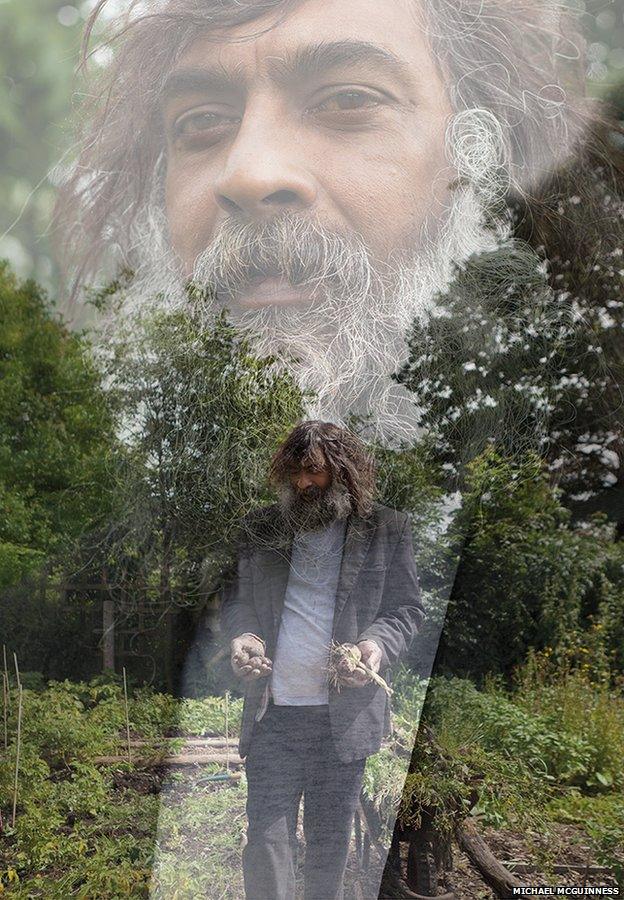
You can view work from Here and There, the final show by photographers on the MA Photojournlism at the University of Westminster here, external, and the work can be seen at at Ambika, P3, external, 35 Marylebone Road, NW1 5LS until 16 September.
Update 8:15, 12 September: At last night's private view I'm pleased to say that Marwah was awarded the Metro Imaging one year mentor prize which will help her continue her work and provide invaluable support.
Alongside Marwah and Michael's work there is plenty to admire, particularly Will Berridge's pictures, external of copper mining in Armenia and Kasia Ciechanowska's series of augmented landscapes is very engaging indeed.
Previous posts looking at Marwah and Michael's work:
Two students seeking an MA: Part II
Twelve weeks to produce a magazine
You can see more of Michael's work on his website, external.